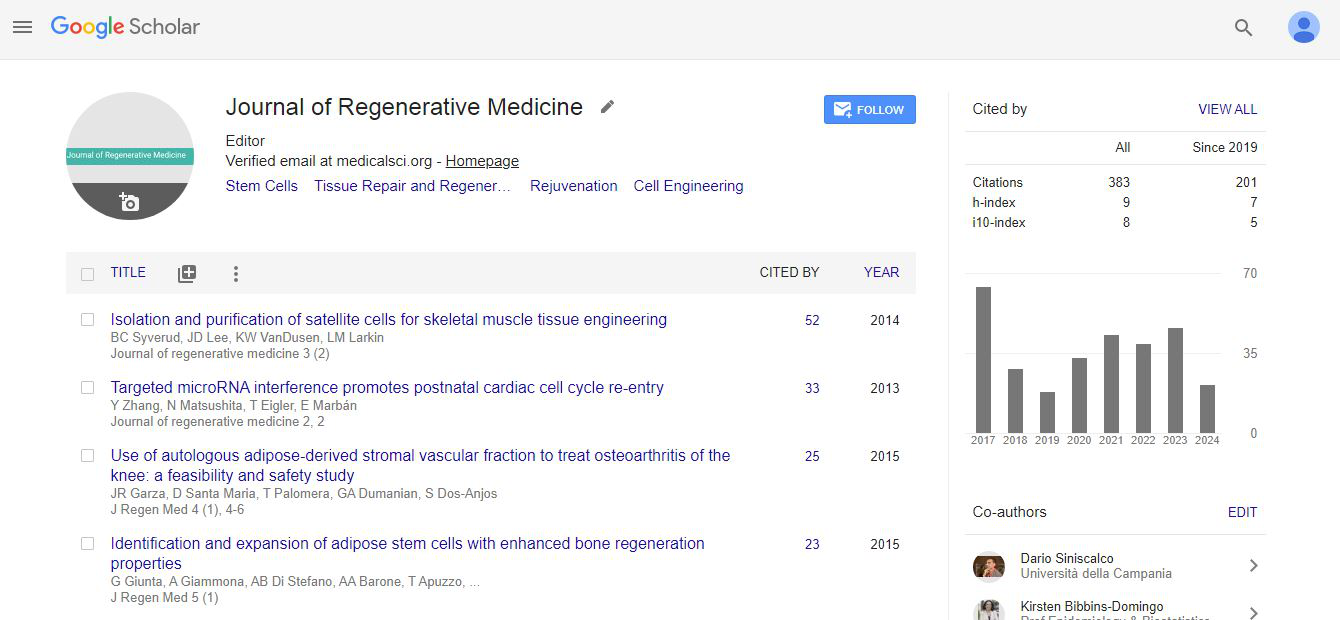Diabetic foot ulcers: Dynamic wound care diagnoses, treatment, and its implications on morbidity and mortality
Hina Rizvi
Advanced Wound Care and Hyperbaric Specialists of Texas, USA
: J Regen Med
Abstract
Statement of the Problem: Diabetic ulcers pose significant challenges in healthcare due to their potential for severe complications often resulting in lower limb amputation with subsequent high economic and psychosocial costs. The hyperglycemic environment promotes the formation of biofilms causes impaired angiogenesis, neuropathy, sub-optimal chronic inflammatory response, barrier disruption, and subsequent poly-microbial infection and therefore makes diabetic wounds difficult to treat. The effective management of diabetic ulcers requires comprehensive wound care treatment methodologies to facilitate timely healing and prevent further complications. However, the optimal approach to wound care for diabetic ulcers remains a subject of ongoing research and debate. Purpose: This aims to explore and describe the various methodologies employed in wound care treatment for diabetic ulcers. By examining different approaches and their outcomes, this study seeks to contribute to the knowledge base surrounding effective wound care strategies for diabetic ulcers. Methodology & Theoretical Orientation: A review was conducted to analyze the existing literature on wound care treatment for diabetic ulcers. The theoretical orientation guiding this study was a patient-centered approach, emphasizing the importance of tailoring wound care interventions to individual patient needs. Findings: The findings of this study demonstrate the existence of various methodologies in wound care treatment for diabetic ulcers. These methodologies encompass a wide range of interventions, including debridement, dressings, offloading, topical agents, negative pressure wound therapy, and advanced therapies such as bioengineered skin substitutes and hyperbaric oxygen therapy. Each methodology has shown potential benefits and limitations, with varying levels of evidence supporting their effectiveness. Conclusion: It is recommended that healthcare providers adopt a holistic and evidence-based approach to wound care treatment for diabetic ulcers. Moreover, greater emphasis should be placed on patient education and self-care management to empower individuals with diabetic ulcers to actively participate in their own wound healing process.
Biography
Rizvi is one of the few Wound Care Specialist Physicians in the Dallas area who is Board Certified by American Board of Wound Management. She also specializes in Hyperbaric Medicine and is a member of American College of Hyperbaric Medicine. She completed her Post-graduate training from University of Oklahoma Health Sciences Center in Internal Medicine and Pediatrics and her residency from UT Southwestern’s department of Family and Community Medicine, also serving as Chief Resident. She is also Board Certified in Family Medicine. Dr. Rizvi was the Medical Student advisor and preceptor at UT Southwestern and has been involved with numerous publications. She has received multiple departmental distinctions, and awards of Excellence. She was a researcher at UT Southwestern and received awards including from Texas Academy of Family Physicians for the Outstanding Research. Dr. Rizvi is a patientcentric physician and is passionate about wound healing and limb salvage providing quality care to her patients. Her experience includes successful healing of over hundred thousand wounds and saving hundreds of amputations.
 Spanish
Spanish  Chinese
Chinese  Russian
Russian  German
German  French
French  Japanese
Japanese  Portuguese
Portuguese  Hindi
Hindi 